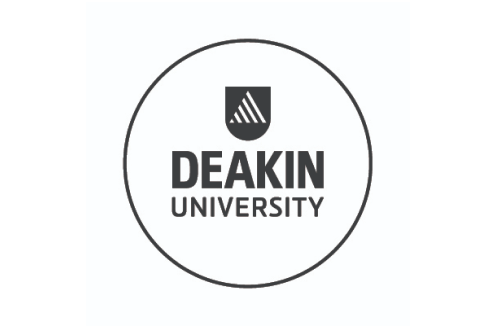Earn a certificate & get recognized
Statistical Analysis
Learn Statistical methods to collect data, employ correct analysis, and present results. Enroll in the course to understand descriptive statistical and exploratory analysis to identify patterns and trends for free online!
About this course
The Statistical Analysis course is designed to help you understand how to employ statistical methods to hoard data, employ analytical techniques, and effective ways to present results. The course begins with explaining the descriptive statistical analysis and then continues with different concepts in exploratory analysis. It also comprehends a demonstration of an insurance company to help you understand the overall subject better. Take up the quiz at the end of the course and avail your certificate. You can also refer to the attached materials at any point after enrolling in the course.
After completing this free, self-paced, beginner's guide to Statistical Analysis, you can embark on your Data Science career with a professional Post-Graduate Data Science certificate course and learn various concepts with millions of aspirants across the globe!
Course outline
Descriptive Statistical Analysis
This section begins with explaining what descriptive analysis is and then briefs about its process followed in any business or an organization, including the measure of frequency, the measure of central tendency, the measure of variance, and the measure of position.
Exploratory Analysis
This section explains exploratory analysis, a business intelligence tool, different challenges an organization faces, data pre-processing, visualization creation, and defines different KPIs with a real-time example.
Insurance Company Demo - Introduction
This section explains the problem statement of a medical insurance company, the different challenges it faces, and the different data categories under the dataset to apply and solve through statistical analysis.
Insurance Company Demo - Explanation
This section begins by explaining what the Jupyter notebook is used for. It solves the fraudulent of the previously understood problem on a medical insurance company by employing statistical analysis using the Jupyter notebook.
Get access to the complete curriculum once you enroll in the course
What our learners enjoyed the most
Skill & tools
61% of learners found all the desired skills & tools
Frequently Asked Questions
Will I receive a certificate upon completing this free course?
Is this course free?
What are the prerequisites to learning this Statistical Analysis course?
This is a beginner's course and does not require any prior knowledge except for knowing the basics of computers. The course shall give you a foundation to work with statistical analysis for Data Science purposes.
How long does it take to complete this free Statistical Analysis course?
Statistical Analysis is a 1-hours long course but is self-paced however. Once you enroll, you can take your own time to complete the course.
Will I have lifetime access to the free course?
Yes, once you enroll in the course, you will have lifetime access to any of the Great Learning Academy’s free courses. You can login and learn whenever you want to. You can refer to the attached study materials at any point after enrolling in the course
What are my next learning options after this Statistical Analysis certificate course?
Once you have a good grasp of statistical analysis concepts, you can learn to apply them to various datasets and solve real-time problems. Enrolling in the Business Analytics course can also enrich your domain knowledge.
Why is it essential to learn Statistical Analysis?
Statistical analysis is a simple concept, a significant mathematical and business intelligence tool to collect data, employ the proper techniques to model a process, and to present the results effectively. It is applied to solve almost all data science problems and provides valuable insights to make crucial decisions while launching new products to the market. It establishes a definitive market for the product and predicts its trends, demand, and sales. So, it is important to learn statistical analysis.
Why is Statistical Analysis so popular?
Statistical analysis can be used to model techniques to escalate demands in businesses. It helps discover new opportunities and derives insights to run businesses effectively. It can make wise business decisions and also aid in identifying the right time.
What jobs demand that you learn Statistical Analysis?
Statistical analysis makes a base in many domains such as data science, artificial intelligence and machine learning, software, and IT. With analytics skills, you make the best suit for Econometrics, Statistical Visualization, Data Management, Statistical Programming, Probability and Statistical Analyst, and Business Intelligence job profiles.
Will I get a certificate after completing this Statistical Analytics certificate course?
Yes, you will get a certificate of completion after completing all the modules and cracking the assessment. The assessment tests your knowledge of the subject and badges your skills.
What knowledge and skills will I gain upon completing this Statistical Analysis certificate course?
You will gain a foundational understanding of what statistical analysis and exploratory analysis are. You will gain skills to work with data of any size, model a technique, and present the results effectively.
How much does this Statistical Analysis course cost?
Statistical Analysis is a free course. You can enroll and learn it for free online. You can also refer to the attached materials at any point after enrolling in this course.
Is there a limit on how many times I can take this Statistical Analysis course?
Once you enroll in this free Statistical Analysis course, you have lifetime access to it. So, you can log in anytime and learn at your convenience.
Can I sign up for multiple courses from Great Learning Academy at the same time?
Yes, you can enroll in as many courses as you want to from Great Learning Academy. There is no limit to the number of courses you can enroll at once, but since the courses offered by Great Learning Academy are free, we suggest you learn one by one to get the best out of the subject.
Why choose Great Learning Academy for this Statistical Analysis course?
Great Learning Academy provides a Statistical Analysis course for free online. The course is not only self-paced but also helps you understand various topics that fall under the subject with solved problems, hands-on experience with projects, demonstrated examples, and explained case study. The course is carefully designed, keeping in mind to cater to both beginners and professionals, and is delivered by subject experts.
Great Learning is a global ed-tech platform dedicated to developing competent professionals. Great Learning Academy is an initiative by Great Learning that offers in-demand free online courses to help people advance in their jobs. More than 4 million learners from 140 countries have benefited from Great Learning Academy's free online courses with certificates. It is a one-stop place for all of a learner's goals.
Who is eligible to take this Statistical Analysis course?
Anybody with basic knowledge of computer science and interested in learning statistical methods to solve Data Science tasks can take up the course. You do not need any prerequisites to learn the course, so enroll today and learn it for free online.
What are the steps to enroll in this course?
Enrolling in this Great Learning Academy’s courses is a one-step process. Sign-up for the course for free with your Email ID if you are interested and start your learning journey.
Other Data Science tutorials for you
Statistical Analysis
Data interpretation, data validation, and statistical data analysis are the methodology of leading different statistical operations. For example, a careful quantitative examination endeavors to evaluate information and utilizes a few kinds of statistical analysis. Here, quantitative data normally incorporates descriptive data like survey data and observational data.
With regards to business applications, it is an exceptionally essential strategy for business intelligence associations that need to work with huge data volumes.
The fundamental objective of statistical data analysis is to recognize patterns. For instance, in the retailing industry, this strategy can be drawn nearer to reveal designs in unstructured and semi-organized buyer information that can be utilized for settling on more remarkable choices for upgrading client experience and progressing sales.
Significance of Statistical Data Analysis
-
Data involves factors that are univariate or multivariate, and incredibly depending on the number of factors, the specialists execute a few statistical techniques.
-
Data is of two kinds, persistent data, and discrete information. The nonstop data can't be counted and changes over the long haul, e.g., the intensity of light, the temperature of a room, and so forth. The discrete data can be counted and has a specific number of qualities, for example, the number of bulbs, the number of individuals in a gathering, and so on.
-
The constant data is circulated under consistent dispersion work, otherwise called the probability density function, and the discrete data is dispersed under a discrete distribution function, additionally named as the probability mass function.
-
Data can either be quantitative or qualitative.
-
Under statistical data analysis, cross-sectional and time-series data are significant.
Types of Statistical Analysis
There are two kinds of generally utilized statistical strategies under statistical data analysis procedures:
-
Descriptive Statistics: It is a type of data analysis that is fundamentally used to describe, show or sum up data from an example genuinely. For instance, mean, middle, standard deviation, and variance. In simple words, descriptive statistical attempts to represent the connection between variables in a sample or population and gives a synopsis as mean, middle, and mode.
-
Inferential Statistics : This technique is utilized for making conclusions from the data sample by utilizing the null and alternative hypotheses that are exposed to random variation. In basic words, inferential statistics employs an irregular example of data taken from a population to make and clarify inferences about the whole population.
Basic Methods of Statistical Analysis
To analyze any issue with the utilization of statistical data analysis includes four fundamental stages;
1. Defining The Issue
The precise and actuarial meaning of the issue is basic for accomplishing precise data concerning it. It turns out to be very hard to gather data without knowing the specific definition/address of the issue.
2. Accumulating The Data
In the wake of resolving the particular issue, designing multiple ways to aggregate data is a significant undertaking under statistical data analysis. Data can be gathered from real sources or can be acquired by observation, and experimental research studies lead to getting new data.
In an experimental study, the significant variable is recognized by the defined problem. Then, at that point, at least one component in the study is controlled for getting data concerning what these components mean for different factors.
In an observational study, no preliminary is executed for controlling or affecting the significant variable. For instance, a led surrey is an example of a common type of observational study.
3. Analyzing The Data
Under statistical data analysis, the analyzing techniques are isolated into two classes:
-
Exploratory Methods, this strategy is conveyed for figuring out the thing the data is uncovering by utilizing simple architecture and easy-drawing graphs/depiction, to sum up, the data.
-
Confirmatory methods, this method embraces ideas and concepts from probability theory for attempting to answer specific problems.
Probability is incredibly basic in decision-making as it gives a methodology for estimating, representing, and explaining the possibilities related to forthcoming events.
4. Reporting The Outcomes
By interference, an estimate or test that claims to be the qualities of a population can be derived from an example. These outcomes could be accounted for as a table, a chart, or a set of percentages.
Since just a little portion of data has been examined, therefore the revealed result can depict a few vulnerabilities by carrying out probability statements and intervals of values.
With the assistance of statistical data analysis, specialists could figure and expect future perspectives from data. By understanding the information accessible and using it effectively may lead to adequate decision making.
Statistical Analysis Tools
In statistical data analysis, the statistical analysis tools are rehearsed, which a layman can't manage without having specific knowledge about statistics. Different software programs are accessible to perform statistical data analysis, and this software incorporates Statistical Analysis System (SAS), Statistical Package for Social Science (SPSS), Stat software, and some more. These tools permit extensive data-handling capabilities and several statistical analysis methods that could inspect a little piece of very comprehensive statistical data.
However, PCs fill in as a significant element in statistical data analysis that can aid the outline of data. Statistical data analysis focuses on the interpretation of the outcome to drive inductions and predictions.
Statistical Analysis Course
This certificate course is for beginners and also for professionals who want to brush up their skill sets; hence this certificate course covers the types of statistical analysis and some basic methods of statistical analysis, putting some light upon the tools used in statistical analysis.
Statistical Analysis Certificate
Comprehension of basic statistics for ML ideas gives a solid establishment to additional learning in the fields of data analysis, data science, and, surprisingly, a few spaces of ML. This free statistics course covers the fundamentals of descriptive statistics and data visualizations. It additionally clarifies the different sorts of statistical distributions and how to apply them to business issues in a straightforward way.

 4.5
4.5














.jpg)






.png)






.png)
.jpg)
.jpg)
.png)
.png)
.png)


.jpg)

.png)

.png)

.jpeg)
.jpg)
.jpg)



.png)
.png)
.png)




.png)
.png)

.png)








 (1).png)

.jpg)

 (1).jpg)

.png)
.png)
.png)
.png)




















